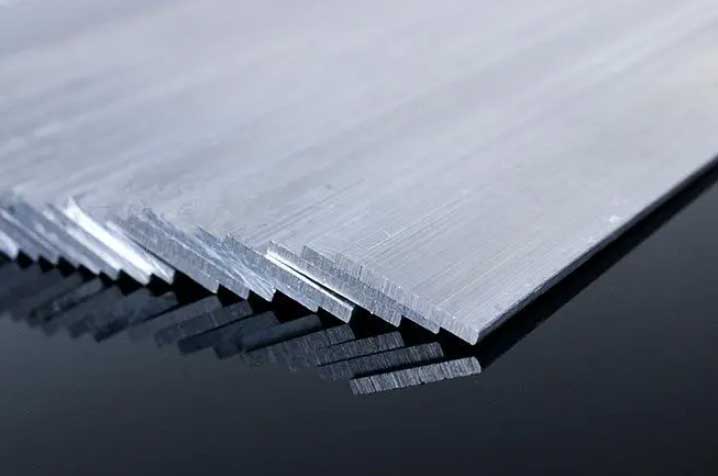Aluminum alloy has many excellent properties, such as low density, corrosion resistance, good electrical and thermal conductivity, and strong processing performance. Therefore, it has been widely used in aviation, automobiles, construction, electronics, packaging and other fields.

Aluminum alloy naming
Aluminum alloy designations usually consist of a four-digit number and a status code.
The first two digits indicate the main alloying elements, as follows:
- 1000 series represents pure aluminum
- 2000 series represents aluminum-copper alloy
- 3000 series represents aluminum-manganese alloy
- 4000 series represents aluminum-silicon alloy
- 5000 series represents aluminum-magnesium alloy
- 6000 series represents aluminum-magnesium-silicon alloy
- 7000 series represents aluminum zinc magnesium alloy
- 8000 series represents aluminum and other alloys
The two digits in the middle represent the modification serial number, which is used to distinguish different varieties of the same alloy series.
For example, 3003 and 3004 aluminum alloys both belong to the 3000 series aluminum-manganese alloys, but their compositions and properties are slightly different.
The last letter represents the status code, where F represents the free machining state, O represents the annealed state, H represents the work hardening state, W represents the solid solution heat treatment state, and T represents the heat treatment state.
The numbers following the letters are used to indicate specific heat treatment status or process conditions.
For example, T4 means natural aging after solution treatment, and T6 means artificial aging after solution treatment.
Temper designation of aluminum alloy
The basic status codes of aluminum alloys include F, O, H, W and T. The mechanical properties and stability of the material during different processing stages and application conditions are described.
Temper F represents free processing status
Description: This is the raw state of the aluminum alloy, where the material has not undergone any further processing after casting or rolling.
Purpose: Suitable for occasions where there are no specific requirements for the mechanical properties of materials, such as simple castings or rolled parts.
Features: low mechanical properties and good plasticity.
Temper O represents the annealing state
Description: Annealing is a heat treatment process used to eliminate stress within the material and improve its plasticity and toughness. The annealed material has lower strength but good processability.
Suffix number: indicates the annealing time, such as O1, O2, etc. The higher the number, the longer the annealing time and the greater the softening of the material.
Temper H represents work hardening state
Description: The material is plastically deformed through cold working (such as stretching, bending, etc.) to increase its strength.
Usage: Suitable for products that require high strength, but these products can lose some strength through heat treatment.
Suffix number: indicates the degree of work hardening. The larger the number, the higher the strength.
Temper W represents the solid solution heat treatment state
Description: Solution heat treatment is the heating of aluminum alloys to high temperatures and then rapid cooling to obtain optimal mechanical properties. This state is unstable and requires natural aging after heat treatment.
Purpose: Suitable for certain occasions requiring specific mechanical properties.
Suffix number: indicates the heat treatment time, such as W1/2 hour, which means the heat treatment time is half an hour.
Temper T represents the heat treatment status
Description: The stable state that aluminum alloy enters after heat treatment is different from the free machining, annealing and work hardening states. Materials in this state have excellent mechanical properties and stability.
Purpose: Suitable for occasions that require heat treatment and maintain stable performance.
Suffix number: indicates the temperature and time of heat treatment. For example, T4 indicates natural aging after solution treatment. The larger the number, the longer the heat treatment temperature and time, and the higher the performance of the material.
